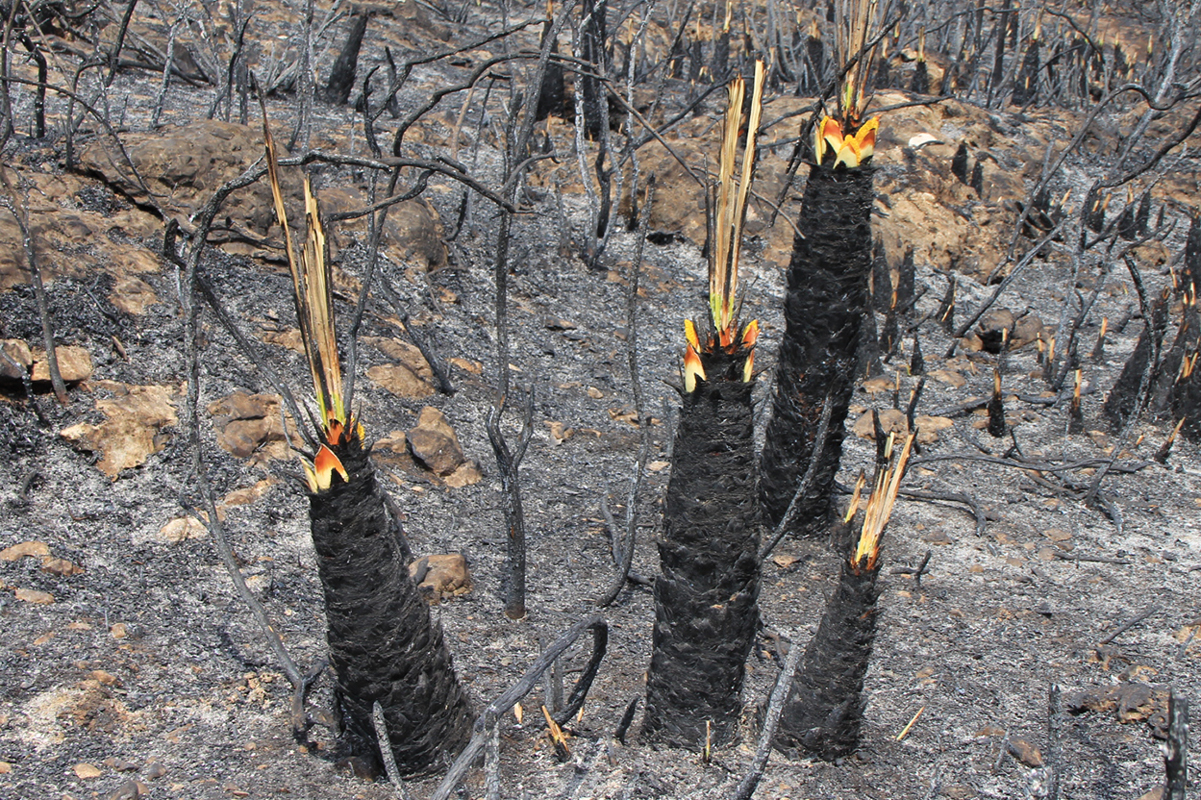
JULI PAUSAS answers:
The purpose of every living being is to reproduce, and in the case of plants this involves ensuring that the seeds germinate in an environment favourable to their growth. That is why plants have developed strategies to spread their seeds in open spaces that allow the germination and growth of offspring.
In Mediterranean ecosystems, fires are quite frequent naturally and generate large open spaces ideal for the germination and growth of many Mediterranean plants (lots of light, little competition, and high availability of nutrients). As a result, many of these species have evolved to optimise germination just after the fire. In order to synchronize germination with the time of the fire, the plants accumulate their seeds in the soil (soil seed bank) and the high temperatures or the presence of fire itself acts as a trigger for germination. A well-known example of this first strategy are rockrose species of the genus Cistus, as well as many shrubs of the legume family (brooms, etc.). A second strategy is to accumulate the seeds in the tree canopy (crown seed bank), within structures that are well protected against fire (pinecones). With the high temperatures of the fires, the pinecones open and the seeds fall into the open space created by the fire and germinate. This is the case of the white pine (Pinus halepensis), so abundant in our territory. In all these cases, reproduction is strongly linked to fires, so this is considered an adaptation to fire.
Juli Pausas a researcher at the CIDE Desertification Research Centre of the (Spanish National Research Council).





